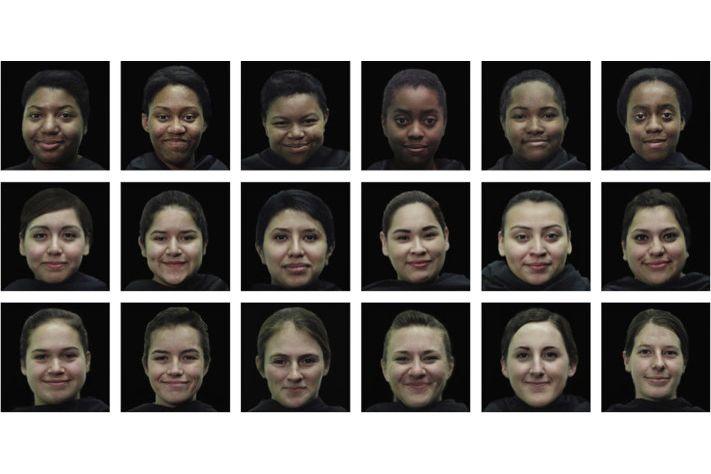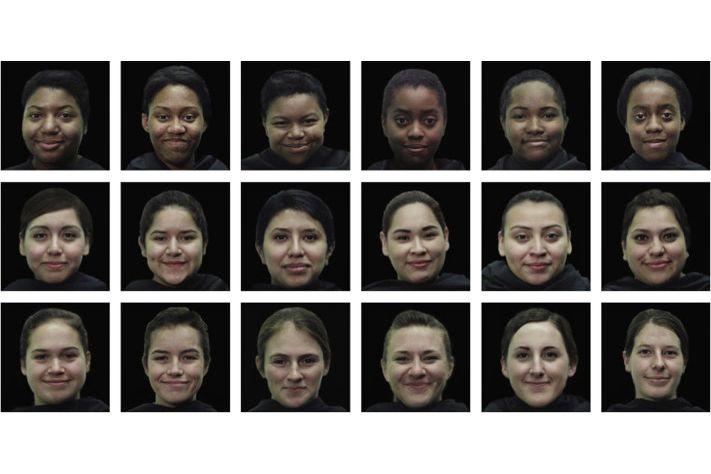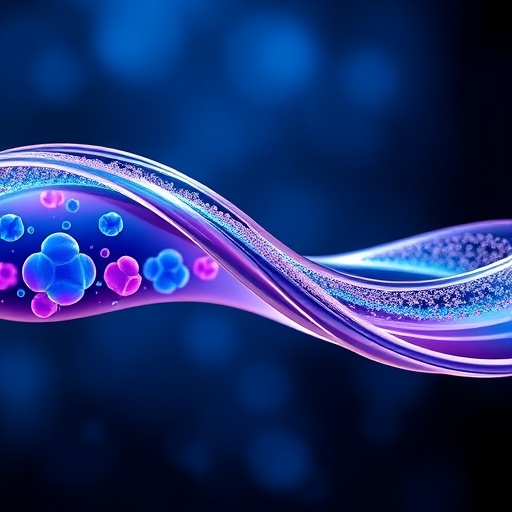
Credit: Anantha Singarajah/UCLA Psychology
Infants less than a year old, who have yet to learn language, appear to notice differences when looking at adult women of different ethnicities, a new study by UCLA psychologists shows.
Researchers studied 40 Hispanic infants and 37 non-Hispanic white infants, all 11 months old. The researchers showed them the faces of 18 young women they did not know on a computer screen, two at a time, side-by-side — six African-American, six Hispanic and six non-Hispanic white.
Recording the infants' eye movements with technology that can track where a viewer is looking, and for how long, the results showed that both Hispanic and white infants looked longer at African-American faces than Hispanic faces, longer at African-American faces than white faces and longer at Hispanic faces than white faces.
"The babies showed such consistent patterns — both the Hispanic babies and the white babies — that it appears that they are aware, at some level, of ethnic differences," said Scott Johnson, a UCLA professor of psychology and an expert in infant perception, brain development, cognition and learning.
Infant attention to faces both of the same race and from other races remains poorly understood, but is important to understanding development of biases toward in- and out-group members, and, to theories of social cognition and social development. The goal of the study was to understand Hispanic infants' and white infants' attention when shown African-American, Hispanic and white faces.
The differences were not large, but Johnson said they were statistically significant. Each pair of faces was on the screen for four seconds, and on average regardless of the ethnicity of the baby or of the faces on the computer screen the infants looked about 17 percent longer — approximately 1.4 seconds versus 1.2 seconds — at one photo than the other. The research will be published in the February 2017 edition of the peer-reviewed journal Cognition, and is already published online.
Half the infants saw upright the photos right-side-up and half saw upside-down faces. That made no difference in where the babies looked. The researchers also swapped which photos were on the left and right to make sure it wasn't a case of babies preferring left or right, and that did not change the result. Nor did the researchers find that the Hispanic faces were darker than the white faces — in case babies prefer to look at darker faces.
The researchers recorded in detail the parts of the faces the infants were viewing, but found no differences in how they scanned the faces from their own ethnicity compared with the faces from other ethnicities.
The researchers considered a number of possible explanations and found no evidence for them. For example, were some faces more attractive than others? The researchers had UCLA undergraduates rate the attractiveness of the faces, and those ratings did not explain the difference.
The researchers chose female undergraduates from the three racial/ethnic groups.
Johnson said that he would encourage other researchers to test the study's findings, including with African-American infants, Asian-American infants and photos of Asian-Americans — which were not part of this study.
The researchers collected data about each infant's social environment, including the infants' family environment and their community environment, but these also were unrelated to patterns of attention to faces.
Johnson said the study should not be interpreted to indicate prejudice or stereotypes. "I don't think this tells us about the origins of prejudices and stereotypes," Johnson said. "We didn't find any evidence in our data for that."
The first four authors were UCLA undergraduates Anantha Singarajah, Jill Chanley, Yoselin Gutierrez and Yoselin Cordon. The other co-authors were Bryan Nguyen, a UCLA research associate, and Lauren Burakowski, a former UCLA doctoral student.
Most adults have a better ability to recognize differences among members of their own ethnic group than among other ethnic groups, Johnson said.
###
The research was funded by the National Institutes of Health (grant R01-HD082844).
Media Contact
Stuart Wolpert
[email protected]
310-206-0511
@uclanewsroom
http://www.newsroom.ucla.edu





